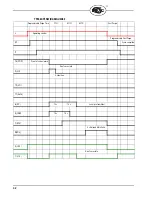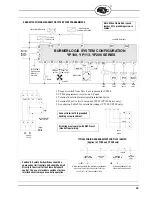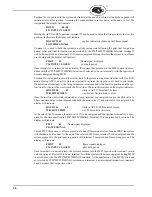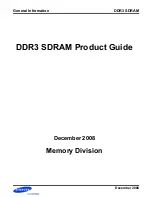
26
£
Keeping the Scanner Cool
The Infrared Scanner (Temperature Limit 140° F) should never get too hot to grasp comfortably in
the hand. Keep the scanner cool by one or more of the following methods.
1.
Use 6" to 8" length of pipe between scanner and hot furnace front plate.
2.
Use insulating tube (P/N 35-69) on the end of the iron pipe.
3.
Force air into sighting tube. Use Fireye Sealing Union (P/N 60-801).
4.
Make sure sighting tube does not extend more than halfway into refractory wall.
INSTALLATION - 69ND1 FLAME ROD
The 69NDl flame rod proves a gas pilot flame and/or main gas flame. It is a spark plug type unit con-
sisting of 1/2' “NPT” mount, a KANTHAL flame rod, a glazed porcelain insulating rod holder and a
spark plug connector for making electrical connections. The 69ND1 is available in 12", 18" or 24"
lengths.
The flame rod may be located to monitor only the gas pilot flame or both the gas pilot and main gas
flames. It is mounted on a l/2" “NPT” coupling.
The following instructions should be observed:
1.
Keep flame rod as short as possible.
2.
Keep flame rod at least 1/2" from any refractory.
3.
Flame rod should enter the pilot flame from the side so as to safely prove an adequate pilot
flame under all draft conditions.
4.
If the flame is nonluminous (air and gas mixed before burning), the electrode tip should extend
at least 1/2" into the flame, but not more than halfway through.
5.
If the flame is partly luminous, the electrode tip should extend only to the edge of the flame. It is
not necessary to maintain uninterrupted contact with the flame.
6.
It is preferable to angle the rod downward to minimize the effect of sagging and to prevent it
from coming in contact with any object.
7.
An adequate grounding surface for the flame must be provided. The grounding surface in actual
contact with the flame must be at least 4 times greater that the area of the portion of the flame
rod in contact with the flame. It is essential to adjust the flame rod and ground area ratio to pro-
vide a maximum, signal reading.
Note:
Interference from the ignition spark can alter the true signal reading by adding to, or subtract-
ing from it. This trend sometimes may be reversed by interchanging the primary wires (line voltage)
to the ignition transformer. This interference can also be reduced by the addition of grounded shield-
ing between the flame rod and ignition spark.















































